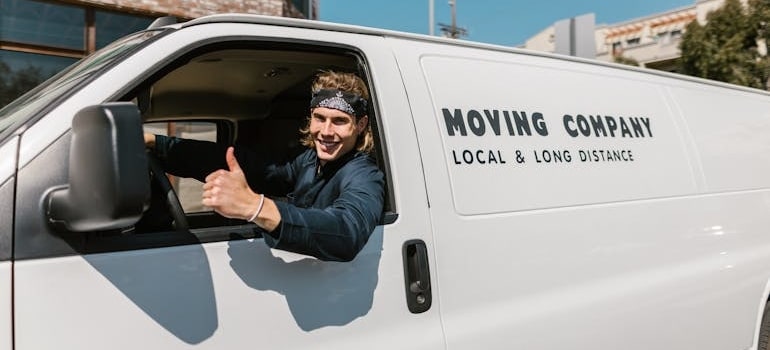Running a moving company today means more than just having trucks and a few good workers. Customer habits have changed. People book services online, read reviews, and expect fast responses. At the same time, more moving companies enter the market each year. If you’re not adapting, you’re losing ground. If you want to grow your moving company in 2025, you’ll need more than effort; you’ll need modern tools and a smart plan. This guide covers real, tested strategies that movers are using right now to gain an edge. From better websites to reputation management, every section offers clear steps you can start using today, whether you’re doing it yourself or working with some of the top digital agencies for movers.
Modern website design that actually works
Let’s start with the basics. A website is your storefront now. It’s often the first thing a customer sees. But just having a site isn’t enough anymore.
To grow your moving company, your website must work well across devices. It should load fast, look clean on phones, and guide visitors straight to what they need. Include an online quote form and a chatbot that answers questions. Click-to-call buttons are also important. If possible, add a pricing calculator to help users estimate their move.
Many top movers also connect their websites to CRM systems. This helps track leads and follow up faster. When checking website design for moving companies, you’ll notice that the most effective ones focus on clarity, speed, and convenience. These sites are mobile-first, easy to navigate, and built to convert leads into booked jobs. Look at current website design examples in the moving industry. The best ones are clean, mobile-friendly, and easy to use. If your site is slow or confusing, customers will leave. Don’t treat design like a one-time task. Update it often to match user expectations.

Online vs offline marketing strategies
A lot of movers still spend money on flyers or newspaper ads. While those might work locally, they don’t compare to the reach and targeting of digital marketing. In the past, offline methods were enough. But the balance has shifted. Today, successful moving companies rely on smart online tactics.
Online wins for several reasons. You can target by ZIP code, age, and behavior. You get real-time data and can scale or pause campaigns instantly. Still, the best approach is a mix. Use direct mail or local billboards for name recognition. Use paid ads and social media to grab intent-driven traffic. Understanding how to plan around online vs offline marketing strategies will help you budget and market smarter in 2025.
Advanced marketing strategies for movers in 2025
If you want to grow your moving company, you must meet customers where they already are—scrolling, searching, and swiping on their phones.
Start with Google Ads. Use local keywords and track which ones turn into calls. Ads need weekly attention, so update often and test different service messages. Then invest in social ads. Facebook and Instagram let you show short videos to people likely to move. Reels and Stories with tips or behind-the-scenes footage are great for grabbing attention fast.
Collaborate with local influencers to expand reach. Someone with local credibility can help drive new leads better than a generic ad. Also, explore the best places to advertise a moving company. Neighborhood Facebook groups, Nextdoor, and online classifieds still bring solid leads with the right messaging.
SEO for movers: Do it smarter in 2025
If you’re serious about how to grow your moving company, SEO should be one of your top tools. But old tricks don’t work in today’s search landscape. Ranking now requires a mix of smart targeting, technical updates, and user intent.
Start with local SEO by:
- Setting up and verifying your Google Business Profile
- Adding photos, service areas, and updated contact info
- Replying to all reviews, positive or negative
- Posting weekly updates or offers
Think beyond keyword stuffing. Today, search engine optimization for movers means matching real search intent. People type things like “How long does it take to move a 2-bedroom in Tampa?” or “Moving company that works Sundays.” Write pages that answer those exact questions.
Add voice search phrases to your site. These are full-sentence questions like “What’s the cheapest day to move?” More people search using voice every year, so don’t miss that traffic.
Many companies also try using AI to create blogs. That’s okay for a draft, but always revise before publishing. Google values helpful, human-first content. Bad AI content can hurt your rankings.
Check your rankings and performance monthly. Adjust based on what your audience actually searches, not just what your competitors do.

Leveraging AI and automation in your moving company
AI and automation can help you grow your moving company without needing more staff. These tools save time and reduce errors while improving the customer experience.
Start with chatbots. They can handle basic questions day or night. Customers can ask about pricing, availability, or services without waiting on hold. Next, use a CRM to manage jobs, track leads, and automate reminders. A good CRM helps your office stay organized and gives your team real-time updates. You can also automate quotes and confirmations. This speeds up the booking process and keeps customers in the loop.
These tools won’t replace your team, but they free you up to focus on quality service and business growth.
Video marketing: Why movers can’t ignore it
If you want more people to find and trust your business, use video. People scroll past text, but they watch videos—especially short ones.
Start with real footage of your team working. Show how you wrap furniture or load a truck. These short clips build trust and show you’re the real deal. Post on TikTok, Instagram Reels, or YouTube Shorts. These platforms push short, helpful content to new users every day. Add moving tips or customer reviews on video. A happy client on camera is more convincing than any written testimonial. You don’t need fancy gear. A phone and 30 seconds of useful content is all it takes to build momentum.
Customer reviews and reputation management
To grow your moving company, you need to build trust, and reviews help you do that fast. After every move, ask for a review right away. A quick text with a direct Google link works best. Make it easy for people to respond while the experience is fresh. Always respond to reviews. Thank the happy ones. If someone complains, be polite and offer to fix the issue. Other customers will see how you handle problems.
Track reviews across Google, Facebook, and Yelp. Use software if needed to keep everything organized. Good reviews boost search rankings, improve conversions, and keep new leads flowing. Treat them as part of your growth strategy.
Data-driven decision making for movers
If you want to grow your moving company long-term, don’t guess—track. Start by monitoring where leads come from. Use tracking numbers, forms, and CRM tools to see whether jobs come from Google, Facebook, or local referrals. Use Google Analytics to understand how people use your site. This guide on setting up GA4 can help you track user behavior more effectively. See which pages they visit, how long they stay, and where they leave. Check your conversion rates. If lots of people visit your site but few book, something needs fixing. Maybe the quote form is too long. Maybe your call-to-action isn’t clear. Make this a weekly habit. Review the data, test new ideas, and keep improving. That’s how smart movers grow and stay ahead.

Taking action to grow your moving company in 2025
You can’t grow your moving company with yesterday’s playbook. Customers now expect speed, clear pricing, and trustworthy service. Competitors are using automation, video, and better targeting every day. If you wait too long to upgrade your strategies, you’ll lose jobs to companies that move faster—literally and digitally. Start small. Improve your website. Get active with video. Optimize your local SEO. Use data and automate what you can. Focus on one step at a time. Now that you know how to grow your moving company in 2025, take action and get ready to scale.






